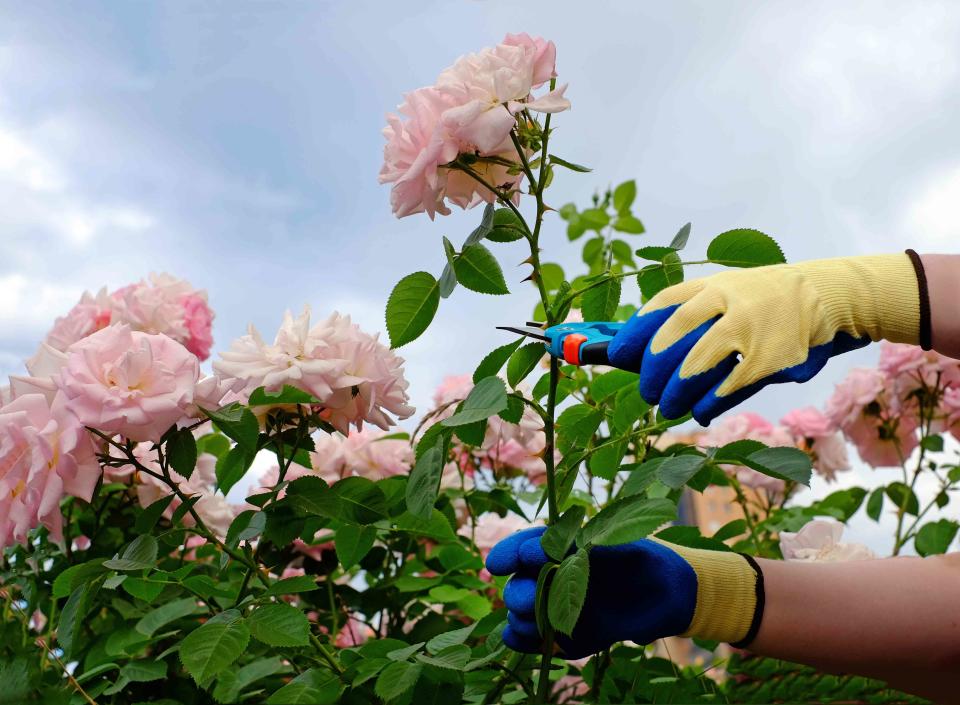How To Grow a Cutting Garden for Fresh Flowers All Summer Long
Keep your vases full with flowers you grew yourself.

Olga Kazanovskaia/Getty Images
Having gorgeous landscaping is essential for curb appeal. But planting a cutting garden can help enhance your indoor decor too, by providing a constant source of gorgeous flowers for floral arrangements.
If you've always wanted a cut flower garden, try these tips to get one that produce beautiful floral bouquets all year long.
What Is a Cutting Garden?
A cutting garden is a garden planned specifically to grow flowers for bouquets and floral arrangements. It's best to use flowering plants that complement each other visually and will continue thriving even after some blooms are removed periodically.
Tips for Starting a Cutting Garden
"Design your landscape like your arrangement. Pick a few larger staples, like dahlias or hydrangeas, with fillers around them and greenery throughout," says Tamara Hogan, plant expert at Fast Growing Trees. "Probably over half of your planting should be something that is your focal flowers."
Build your cutting garden over time
It might take a few years, but that's ok. "The biggest mistake I see is growing too much too quickly," Hogan says. "Before you rip out your whole backyard and do a massive planting, pick a few to focus on and do your research. It’s better to plan and underplant than get overwhelmed."
"Grow what interests you to start with and then you can dive into more of what you need to fill out your garden afterwards."
Pick some showcase flowers
Rather than have a bit of a bunch of different kinds of flowers, focus on a few show-stopping blooms that will be the highlight of your bouquets. "Cosmos, dahlias, and lisianthus are some great staples to have in a cutting garden," Hogan says. "Coneflower and black-eyed Susan are also great options."
Don't forget about the fillers
"Filler flowers can be used to help fill out your arrangements, bring color in less statement ways, and are a great way to provide texture," Hogan says. That can be anything from tiny flowers to grasses, branches, and greenery.
Look at plants that offer more than just their flowers
"Plants like poppies and scabiosa are wonderful cut flowers, but also have great seed pods that can be dried and used for design as well," Hogan says.
Consider bloom times
Every flower has its season. Some are short-lived (like the few weeks of tulip or peony season), and other plants, like coneflowers, will keep blooming for months. If you want to keep your vases full all year long, look closely at bloom times, and try to choose a variety of different plants. That way, as one flower fades, a new one starts to bloom.
Opt for a mix of annuals and perennials
Perennials that'll bloom year after year make a great investment for a cut flower garden, but annuals will offer an opportunity to plant new types of flowers (or different colors or varietals) each year to add a little variety to your floral arrangements.
The Best Flowers for a Cutting Garden
You probably already have specific flowers that you love, whether they're peonies or roses. But you may want to branch out and include a variety of flowers in your garden, to allow you to get a little creative with your arrangements. You can use both perennials and annuals to round out your cut flower garden—and allow you to mix it up season by season.
Tulips
Black-Eyed Susan
Peonies
Sweet Pea
Lisianthus
Ranunculus
Daffodils
Anemone
Calla Lilies
Poppies
Chrysanthemum
Pincushion flowers
Lilies
Gerbera daisies
Allium
Cosmos
Delphinium
Hydrangea
Freesia
Roses
Coneflower
Dahlia
Zinnia
Sunflowers
Tip
Don't forget greenery! While a bouquet of all big and vibrant blooms will be pretty, adding greenery or filler flowers will add some interest to your bouquets. Consider planting things like baby's breath, celosia, ornamental grasses, and herbs to bundle with your cut flowers at harvest time.
For more Real Simple news, make sure to sign up for our newsletter!
Read the original article on Real Simple.


